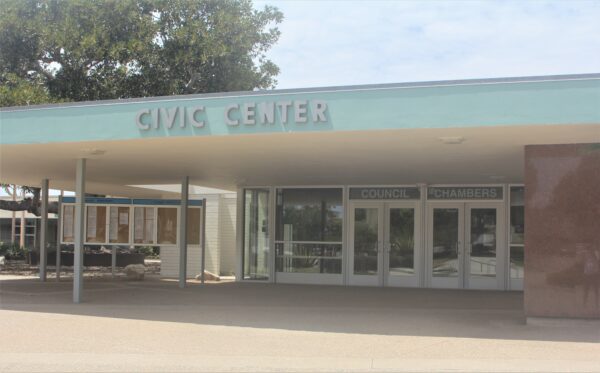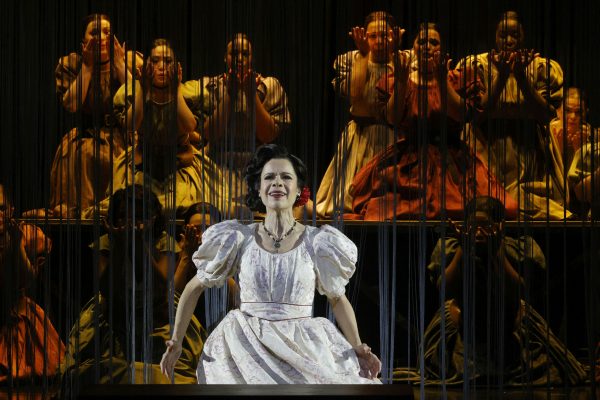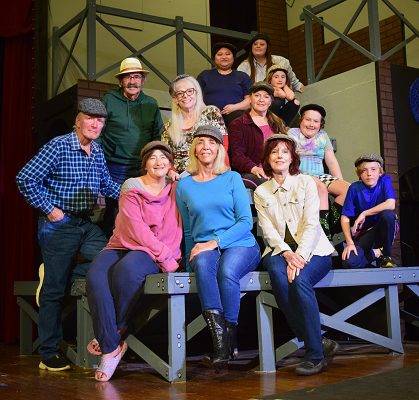
Dan Marinelli, a.k.a. “Danimal,” is bringing his game face and a detailed playbook to Super Bowl XLVI. He’s not one of the players, but he’ll capture them from the sidelines on a handheld TV camera, while his fellow Hermosans sit in front of their sets and enjoy his work.
Marinelli, 46, a two-time Emmy-winning TV cameraman, is in Indianapolis to work on his sixth Super Bowl. He’ll man “Far Side Handheld Camera 12,” a Sony HDC 1500 with a cable flowing behind him to an NBC production truck.
He said he’ll get pre-kickoff butterflies all over again.
“I’ll be pumped up,” he said, resting up on a Pier Avenue bench a couple days before hopping on an eastbound plane.
Marinelli worked the sidelines for NBC’s Sunday Night Football throughout the season, involuntarily capturing a super-duper close-up when Baltimore Ravens linebacker Terrell Suggs picked off a pass by Pittsburgh Steelers quarterback Ben Roethlisberger, and then nearly ate Marinelli’s camera in celebration.
The quarterback had thrown the ball in Marinelli’s direction, so he knew he was getting a great shot for instant replay. Suggs was tackled, got up and bounded off the field, roaring up to Marinelli, grinning and yelling unintelligibly, and sticking his face against the lens, at one point showing the home audience little but teeth and spittle.
It was raw enthusiasm and wild testosterone, and the Danimal had no choice but to ride it out.
“I was thinking, how far is he going to take this. This guy is three times my size,” Marinelli said.
When Suggs moved away, teammates could be seen in the background shaking their heads and smiling wryly at the visceral display.
On Super Sunday, Marinelli will be roaming the far sideline, on the opposite side of the main “game camera” that shows each play live on TV. During plays, he’ll spend much of his focus on wide receivers, and he’ll swing his attention to coaches and to players coming on and off the field in between plays and during timeouts.
Intense interactions, such as “players and coaches getting into it with each other,” are especially valued by director Drew Esocoff, he said.
Esocoff will use the game camera as his starting point for every play, and the responsibilities of Marinelli and 39 other camera operators will shift and flow along the directions laid out in their broadcast playbook, a lengthy “NBC Sports Coverage Manual” prepared for the game.
“Everything flows from there, by the playbook,” Marinelli said.

The playbook spells out each camera operator’s assignment on every type of play, with further breakdowns by field position – whether the ball is close to a goal line — and by numerous player formations on offense and defense.
Camera operators must adjust their assignments as offensive players go in motion, changing the team’s formation, and as the deliberately disguised defenses settle into zone or man-to-man coverage.
There are specific instructions on how wide to frame the beginning of a play and then narrow or widen the focus as the play develops. For instance, a near-side camera operator, whose primary responsibility is isolation coverage of the tight end, must start out wide enough to show one other receiver as well, and “try to get them in together as long as you can without getting too wide, knowing that you must always account for your primary [isolation target].”
The playbook includes diagrams of numerous offensive and defensive sets, and photos of good work from seasons past. A screen capture of Santonio Holmes’ 2009 Super Bowl-winning catch against the Cardinals praises the camera operator for catching the entire player, from his head to his all-important toes, which are seen dancing just inside the end zone.
On the responsibilities of Marinelli and other sideline camera operators, the playbook muses, “With adjustments being made on every series and coaches working intently for the slimmest of edges, we cannot overstate the importance of the benches in our telecast. These are instrumental chapters of an evolving and ever-changing story, and it’s absolutely essential we cover it with great detail.
“These cameras also help document the drama that comes with a championship game. Rest assured your efforts will be rewarded on the air and the show will be much more satisfying for the viewer if we’re able to provide them with meaningful and creative shots on a consistent basis.”
An opening message to the NBC troops from Esocoff and producer Alfred Gaudelli reads like a coach’s instruction to players: come prepared, bring your best game, but don’t try to play over your head.
A successful broadcast “is built on the simple principle of executing your job in the same manner that earned you a place on this team,” they wrote.
“No one is going to be required to perform superhuman feats or attempt things out of the ordinary. We are so confident in your ability and our plan that there is no doubt whatsoever if we all execute correctly we’ll have a memorable telecast.”
(Related story: telecast by the numbers)
Marinelli will be allowed almost as close to the playing field as the broad, white out-of-bounds stripe, closer than a host of non-NBC camera people who will be held about a stride behind him.
He has covered three previous Super Bowls for a main network telecast and two for NFL Films international feeds. Marinelli was on the sidelines looking through a lens when his beloved Pittsburgh Steelers beat Seattle in 2006 and then beatArizonathree years later, but he was not there when the Steelers lost to Green Bay last year.
The Super Bowl is televised in rotation by NBC, CBS and Fox networks, which use employees from their own crews, and pick up extra camera operators and production hands as well. This year NBC went with its main crew from its “nighttime package” that had just worked a season of Sunday night football.
Also picked from the nighttime package were Esocoff, producer Alfred Gaudelli and announcer Al Michaels, who will work the booth with color commentator Cris Collinsworth.
Marinelli, who also serves as a Hermosa public works commissioner appointed by the City Council, has also shot Olympic figure skating and gymnastics, college football, Masters golf, U.S. Open tennis, NASCAR and Formula I car racing and World Cup soccer.
In early 2008 he went to Iraqto shoot a sit-down interview with Gen. David Petraeus, commander of American and multinational forces, for a public TV station in Denver.









